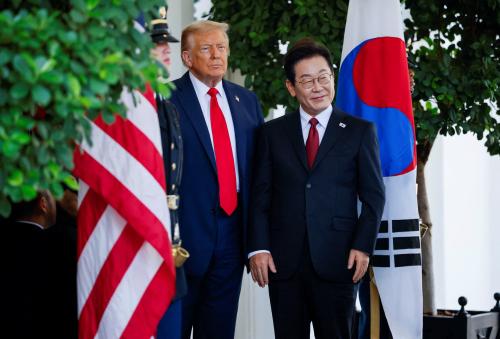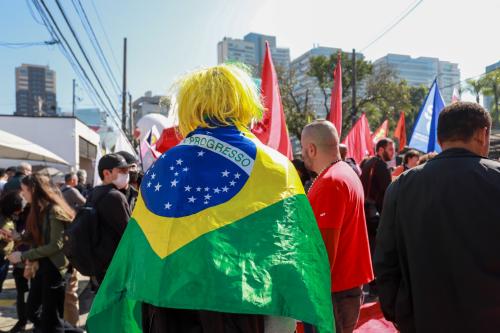Russia’s apparent escalation in Syria is less dramatic than it seems, but it still represents another depressing development in the ongoing nightmare of the Syrian civil war. While it appears no Russian troops are engaged in fighting, the volume of military cargo delivered from Russia to Syria by sea and air has significantly increased in the last couple of weeks. President Putin did assert that it was “premature” to talk about direct Russian participation in the yet-to-be-built coalition against the various terrorist groups in the country. And even though Putin says it, it might still be true.
Clearly, putting scarce Russians troops on the ground to fight in a hopelessly stagnant civil war is not Moscow’s preferred path. Instead, the recent escalation probably reflects an effort to establish a position of strength from which to bring Moscow back into the center of the diplomacy over Syria. It won’t work, though Russian assistance and weapons to the regime may make the situation in Syria even worse for the population.
Speak loudly and carry a small stick
The stunning success of Russian Special Forces in Crimea has created an exaggerated impression of Russia’s ability to execute power-projection operations. In fact, Russia can only field a few dozen battalions, and most of them are presently tied up on the borders of Eastern Ukraine or inside the Donbass war zone.
To make any meaningful difference in the chaotic battles of the Syrian civil war, Russia would need to deploy at least a brigade (3 to 4 battalions or about 1,500 troops) with its full complement of heavy arms, which is beyond the Russian capacity to transport and sustain. (A Mistral-class amphibious assault ship would have come in handy, but France declined to deliver those ships after the Russian annexation of Crimea). When Russian military planners consider Syria, they think not of Crimea, but of Chechnya, where too small deployments in the early days of the war resulted in defeat and humiliation. Ultimately, Russia had to deploy a 100,000-strong force. It is unlikely that the Russian military has forgotten those hard lessons.
A small-scale intervention in the form of, say, a deployment of a squadron of Su-34 strike fighters to a base in the government-controlled city of Lattakia is possible. It would still require a big logistical effort and a Russian Marine battalion in order to ensure the base’s security, but at least Russian planes would be able to deliver strikes against the Islamic State (or ISIS).
The main risks would come not from enemy fire but from technical failures, as the Russian Air Force has had a sad track record of accidents recently. The effectiveness of strikes in the absence of real-time intelligence and high-precision munitions is certain to be low, but at least Moscow would be able to demonstrate its capacity for “muscular” conflict (mis)management in Syria.
Over-sized political ambitions
That the Russian government is even considering deploying such a costly and militarily irrelevant force to the Syrian charnel house reflects Russia’s worrying position in Syria. Russia’s proxy in the Syrian war, the Bashar Assad regime, has suffered several setbacks in recent months, including the ISIS advance through central Syria and opposition victories in Idlib. Worse, from Moscow’s point of view, the recent success of the opposition results in part from increased and improved foreign assistance from Saudi Arabia, Turkey, and Qatar, as well as the United States. While the regime is unlikely to collapse any time soon, it has been weakened just as Russia is becoming more fearful of ISIS’s rapid spread.
The Russian government has no strong attachment to Syrian President Bashar Assad, but it fears that a collapse of his besieged regime would create yet more violent chaos in the terrorism-infested region. And, based on the example of Iraq, Moscow also puts little stock in the idea that a U.S.-engineered solution that excluded Assad could create stability in Syria or defeat ISIS and other radical Islamist groups.
In response, Russian President Vladimir Putin has increased Russian material assistance to the regime and conducted a lot of high-level networking this summer, courting Saudi Deputy Crown Prince Mohammed bin Salman Al Saud, Egypt’s President Abdel-Fattah el-Sissi, and King Abdullah II of Jordan. He found little interest in his idea of building an anti-ISIS coalition that would include Assad. The recent efforts reflect the view that bringing the United States and its allies around to this point of view will require, in the classic formulation, “negotiating from position of strength.” This requires shoring up (or at least appearing to shore up) the shaky Assad regime.
The goal is to return to the glory days of Putin’s September 2013 initiative on the destruction of Syrian chemical weapons, when Russia stood at the center of diplomacy over Syria. Indications are that Putin intends to focus his address to the UN General Assembly in late September on the idea of a counter-terrorism coalition against ISIS that would include the “legitimate” government of Syria, newly reinforced with Russian weapons.
Tit-for-tat
Ironically, this strategy is nearly a mirror image of the equally flawed American plan for Syria. American policy similarly holds that convincing Assad’s external supporters to abandon him requires changing the balance of power in the civil war sufficiently to make clear that the regime has no future. And so America and its partners have gradually increased their assistance to the Syrian opposition. But far from seeing the Assad regime as a “dead man walking,” the Russian and Iranian supporters of the regime have simply doubled down in an attempt to create their own facts on the ground.
The Russian and American policies are similar in another important respect: neither is likely to convince the other side to abandon their policy toward Assad or produce the desired negotiation. To the contrary, the supporters of the Syrian opposition—not just the United States, but also Saudi Arabia, Qatar, and Turkey—are more likely to counter-escalate. In a manner familiar from the endless proxy civil wars of the Cold War era, escalation follows escalation, ultimately serving only to sustain the civil war indefinitely and increase the violence astronomically. Eventually, all sides will learn that changing the balance of power on the ground will not work, grow exhausted of struggle, and find some genuine compromise on the future of the Assad regime. That could take many years, however, and, in the meantime, we should expect the Syrian civil war to get yet worse.
The Brookings Institution is committed to quality, independence, and impact.
We are supported by a diverse array of funders. In line with our values and policies, each Brookings publication represents the sole views of its author(s).




Commentary
How Russia and America make the same mistakes in Syria
September 11, 2015